In the world of computing, particularly for gamers, content creators, and tech enthusiasts, understanding and managing GPU (Graphics Processing Unit) temperatures is crucial for maintaining system performance and longevity. One question that often arises is, “Is a 30°C GPU temperature at idle good?” This article aims to provide a comprehensive analysis of GPU temperatures, with a focus on why a 30°C idle temperature is considered excellent.How Good Is 30c Gpu Temp On Idle We will explore the factors influencing GPU temperature, compare different temperature ranges, discuss the impact on performance and hardware lifespan, and provide practical tips for managing your GPU temperature effectively.
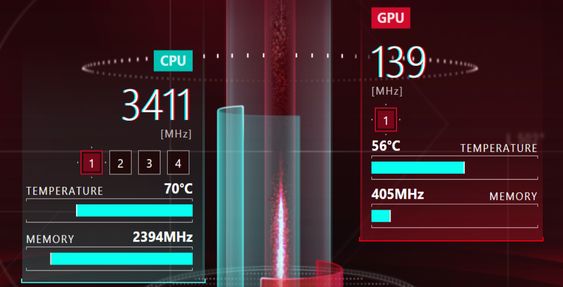
Table of Contents
1. Introduction to GPU Temperature
1.1 What Is GPU Temperature?
The GPU temperature refers to the heat generated by the graphics processing leptos unit during its operation. This temperature can vary significantly based on the GPU’s workload, cooling system efficiency, and the overall environment of the computer. Understanding GPU temperatures is essential for optimizing performance and ensuring that your hardware remains in good condition.
1.2 Why Monitor GPU Temperature?
Monitoring GPU temperature is critical because excessive heat can lead to several issues:
- Thermal Throttling: To prevent overheating, GPUs automatically reduce their performance when temperatures exceed certain thresholds. How Good Is 30c Gpu Temp On Idle This can lead to reduced performance during gaming or intensive tasks.
- Hardware Damage: Prolonged exposure to high temperatures can damage GPU components, potentially leading to costly repairs or replacements.
- System Stability: High temperatures can cause system instability, crashes, and other performance issues.
2. Understanding How Good Is 30c Gpu Temp On Idle
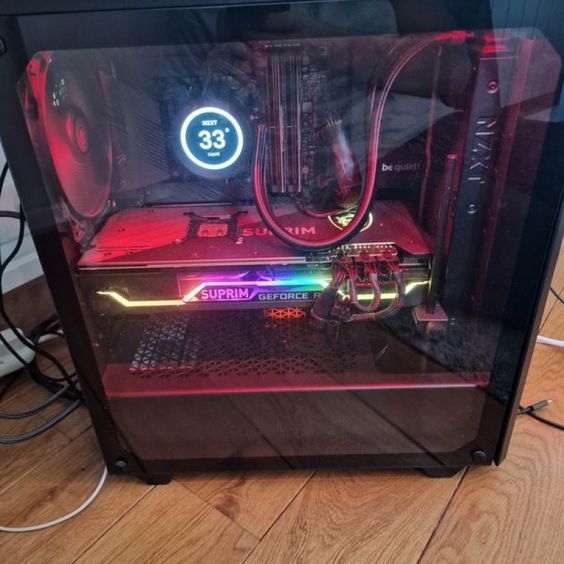
2.1 What Is Idle Temperature?
Idle temperature is the temperature of the GPU when it is not under significant load. This occurs when the computer is performing minimal tasks, such as browsing the web, checking emails, or sitting idle on the desktop. Idle temperatures are crucial because they provide insights into how well the cooling system is performing when the GPU is not actively processing data.
2.2 Factors Affecting Idle Temperature
Several factors can influence idle GPU temperature, including:
- Cooling System: The efficiency of your GPU cooler, including fans and heatsinks, plays a significant role in maintaining low idle temperatures.
- Ambient Temperature: The temperature of the room where your computer is located affects the overall temperature of your GPU.How Good Is 30c Gpu Temp On Idle Cooler room temperatures generally result in lower GPU temperatures.
- Case Airflow: Proper ventilation and airflow within the computer case ensure that hot air is effectively expelled, helping to maintain lower GPU temperatures.
- System Configuration: The overall design and components of your PC, including the quality of thermal paste and the positioning of components, impact idle temperatures.
3. Is 30°C Idle Temperature Good?
3.1 What How Good Is 30c Gpu Temp On Idle Indicate?
A GPU temperature of 30°C while idle is considered excellent. It suggests that your cooling system is operating efficiently and effectively managing heat dissipation. Here’s why a 30°C idle temperature is noteworthy:
- Optimal Cooling: A 30°C idle temperature indicates that your GPU cooling system is functioning well, even when the system is not under load.
- Efficient Performance: Cool idle temperatures help ensure that the GPU remains in good condition and performs optimally during intensive tasks.
- Low Wear and Tear: Maintaining a lower temperature reduces the wear and tear on GPU components, potentially extending the hardware’s lifespan.
3.2 Comparison with Other Temperature Ranges
To put a 30°C idle temperature into perspective, let’s compare it with other common temperature ranges:
- 20°C to 25°C: This is an excellent range, indicating that your cooling system is highly effective. If your GPU idles within this range, it suggests superior cooling efficiency.
- 30°C to 35°C: This range is still considered very good. Most modern GPUs will idle within this range, reflecting a well-functioning cooling system.
- Above 40°C: Temperatures above 40°C are higher but still within acceptable limits.How Good Is 30c Gpu Temp On Idle If your GPU frequently idles above this range, it may be worth checking your cooling system and airflow to ensure optimal performance.
4. Impact of Idle Temperature on Performance and Longevity
4.1 Performance Implications
While a 30°C idle temperature is excellent, it’s essential to understand how it impacts performance:
- Prevents Thermal Throttling: Cool idle temperatures help ensure that the GPU remains below critical temperature thresholds, preventing thermal throttling during high-demand tasks.
- Stable Performance: Maintaining a cooler temperature helps ensure consistent performance, as the GPU is less likely to experience overheating issues that could impact gaming or rendering tasks.
4.2 Longevity and Durability
The longevity of your GPU is directly influenced by its operating temperatures:
- Reduced Wear and Tear: Lower idle temperatures reduce the stress on How Good Is 30c Gpu Temp On Idle components, which can extend the lifespan of the hardware.
- Less Risk of Damage: Prolonged exposure to high temperatures can cause damage to the GPU. By maintaining lower idle temperatures, you reduce the risk of long-term damage and potential failures.
5. Tips for Maintaining Optimal GPU Temperature
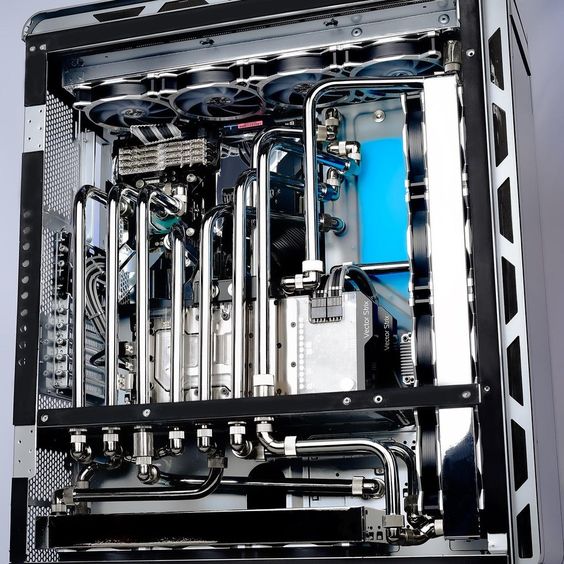
5.1 Regular Cleaning and Maintenance
Dust accumulation can obstruct airflow and impact cooling efficiency. Regularly clean your PC, including fans, heatsinks, and vents, to ensure proper ventilation and cooling.
5.2 Improve Case Airflow
Good case airflow is crucial for How Good Is 30c Gpu Temp On Idle maintaining optimal GPU temperatures. Ensure that your PC case has adequate ventilation and consider adding additional case fans if needed to improve airflow.
5.3 Monitor GPU Temperatures
Use software tools to monitor your GPU temperatures regularly. Many GPU management tools provide real-time temperature readings and can alert you if temperatures exceed safe limits.
5.4 Update Drivers and Firmware
Keeping your GPU drivers and firmware up to date ensures that your hardware operates efficiently and benefits from the latest performance optimizations and bug fixes.
5.5 Replace Thermal Paste
If you’re comfortable with hardware maintenance, consider replacing old thermal paste on your GPU. How Good Is 30c Gpu Temp On Idle Fresh thermal paste can improve heat transfer between the GPU and its cooler, leading to lower temperatures.
6. Common Myths and Misconceptions
6.1 Myth: Lower Idle Temperature Means Better Performance
While a lower idle temperature is a good indicator of an efficient cooling system, it does not directly correlate with better performance.How Good Is 30c Gpu Temp On Idle Performance is influenced by various factors, including GPU load, clock speeds, and overall system configuration.
6.2 Myth: A 30°C Idle Temperature Is Too Low
A 30°C idle temperature is not too low.How Good Is 30c Gpu Temp On Idle It is within the expected range for modern GPUs and indicates that your cooling system is working effectively. Extreme low temperatures are not usually a concern unless they cause instability.
7. Case Studies and Real-World Examples
7.1 High-Performance Gaming PC
In high-performance gaming PCs, maintaining a 30°C idle temperature is often achievable with advanced cooling solutions, such as liquid cooling systems and high-quality thermal paste.How Good Is 30c Gpu Temp On Idle These systems are designed to keep GPU temperatures low, even under heavy load.
7.2 Budget Builds
In budget or mid-range systems,How Good Is 30c Gpu Temp On Idle may still be achievable with adequate airflow and cooling solutions. However, it may require more frequent maintenance to ensure optimal performance.
8. Conclusion
In conclusion, a 30°C GPU temperature at idle is an excellent indicator of an efficient cooling system and effective hardware management. It suggests that your GPU is well-maintained and that your system is optimized for both performance and longevity.How Good Is 30c Gpu Temp On Idle By monitoring your GPU temperatures, maintaining proper airflow, and performing regular maintenance, you can ensure that your GPU remains cool and performs at its best.
Pros and Cons of a 30°C GPU Temperature at Idle
Understanding the implications of your GPU’s idle temperature is essential for maintaining optimal system performance and longevity. While a How Good Is 30c Gpu Temp On Idle is generally considered excellent, it’s important to consider both the benefits and potential drawbacks associated with such a temperature. Here’s a detailed look at the pros and cons:
Pros of a 30°C GPU Temperature at Idle
1. Efficient Cooling System
A GPU temperature of 30°C at idle typically indicates that your cooling system is functioning efficiently. This suggests:
- Effective Heat Dissipation: Your cooling solution—whether air or liquid cooling—is effectively managing heat, even when the GPU is not under load.
- High-Quality Components: The low idle temperature can imply that your GPU and cooling components are of high quality and working as intended.
2. Extended Hardware Lifespan
Maintaining a lower idle temperature can have a positive impact on the longevity of your GPU:
- Reduced Wear and Tear: Lower temperatures help minimize the wear and tear on your GPU components, potentially extending their lifespan.
- Less Risk of Thermal Damage: Prolonged exposure to high temperatures can accelerate hardware degradation. A cooler idle temperature reduces this risk.
3. Improved Performance Stability
A cooler idle temperature contributes to overall system stability and performance:
- Prevents Thermal Throttling: With a lower idle temperature, your GPU is less likely to experience thermal throttling during high-demand tasks, ensuring more consistent performance.
- Better Handling of Demands: Efficient cooling systems often translate to better performance handling during peak loads because the GPU starts from a cooler baseline.
4. Lower Noise Levels
Efficient cooling at lower temperatures can also lead to quieter operation:
- Reduced Fan Speed: Cooler temperatures often mean that fans can run at lower speeds, resulting in less noise from your PC.
- Enhanced Quiet Operation: If your cooling system is designed well, it can maintain low temperatures with minimal noise, enhancing your overall computing experience.
5. Optimal Power Consumption
Lower idle temperatures can also be indicative of optimal power usage:
- Energy Efficiency: Efficient cooling systems and lower idle temperatures often correlate with more energy-efficient operations, as the GPU doesn’t need to use as much power to cool down.
Cons of a 30°C GPU Temperature at Idle
1. Potential Over-Engineering
While a 30°C idle temperature is generally positive, there can be cases where it may indicate over-engineering:
- Unnecessary Costs: High-performance cooling solutions that achieve such low temperatures might be more expensive and might not be necessary for all users.
- Diminishing Returns: Investing in high-end cooling for a minor improvement in idle temperature might not provide significant benefits in real-world usage.
2. False Sense of Security
A 30°C idle temperature might create a false sense of security:
- Ignoring Load Temperatures: While idle temperatures are excellent, it’s also crucial to monitor the GPU under load to ensure it performs well during intensive tasks.
- Potential Misdiagnosis: Relying solely on idle temperatures might lead to overlooking other issues related to cooling efficiency during heavy use.
3. Possible Environmental Factors
Achieving and maintaining a 30°C idle temperature might depend on environmental factors:
- Cool Room Conditions: If your room is unusually cool, this could contribute to the low idle temperature. Changes in ambient temperature could impact performance.
- Seasonal Variations: Seasonal changes in room temperature might affect idle temperatures, making consistent management more challenging.
4. Potential for Overclocking Risks
For users who engage in overclocking:
- Increased Risks: Extremely low idle temperatures may encourage overclocking, which can lead to higher risks of hardware failure if not managed properly.
- Balancing Act: Managing temperatures and ensuring stability while overclocking requires careful balancing of cooling solutions and hardware settings.
5. Complexity in Maintenance
Maintaining a cooler idle temperature might require more complex setups:
- Advanced Cooling Systems: High-efficiency cooling systems may require regular maintenance and monitoring to ensure they continue to perform optimally.
- Technical Expertise: Implementing and managing sophisticated cooling solutions can require a higher level of technical knowledge and experience.
Frequently Asked Questions About GPU Temperature and Idle Performance.
When it comes to GPU temperatures, especially concerning an idle temperature of 30°C, there are many questions and concerns that can arise. Here’s a comprehensive FAQ to address common queries and provide clarity on GPU temperatures and their implications.
1. What is an idle GPU temperature?
Idle GPU temperature refers to the temperature of your graphics card when it is not performing intensive tasks. This occurs when your computer is running minimal processes, such as browsing the web or sitting idle on the desktop. The idle temperature is an important indicator of how well your cooling system is functioning when the GPU is not under significant load.
2. Is a 30°C GPU temperature at idle good?
Yes, a 30°C GPU temperature at idle is considered excellent. It indicates that your GPU’s cooling system is working efficiently to maintain low temperatures even when the GPU is not under stress. This can contribute to better overall performance and longevity of the hardware.
3. What are the typical idle temperatures for GPUs?
Typical idle temperatures for GPUs can vary depending on the model and cooling system. Generally:
- 20°C to 25°C: Excellent. Indicates superior cooling efficiency.
- 25°C to 35°C: Very good. Most modern GPUs idle within this range.
- Above 35°C: Still acceptable but may require attention to cooling or airflow.
4. How does GPU temperature affect performance?
GPU temperature directly impacts performance in the following ways:
- Thermal Throttling: If the GPU temperature exceeds certain thresholds, the GPU may throttle its performance to avoid overheating, which can reduce performance.
- Consistent Performance: Maintaining lower temperatures helps ensure that the GPU operates at peak performance without thermal throttling.
5. Can high idle temperatures affect GPU lifespan?
Yes, high idle temperatures can potentially affect the GPU’s lifespan. Prolonged exposure to elevated temperatures can accelerate wear and tear on GPU components, leading to potential hardware failures over time. Maintaining a cooler idle temperature helps mitigate this risk and can extend the life of your GPU.
6. What is the ideal temperature range for GPU during heavy use?
During intensive tasks such as gaming or rendering, the ideal GPU temperature range is typically:
- 60°C to 85°C: Most modern GPUs are designed to operate safely within this range under load.
- Above 85°C: Temperatures above this range may indicate overheating and can lead to thermal throttling or potential damage if not addressed.
7. How can I monitor my GPU temperature?
You can monitor your GPU temperature using various software tools:
- GPU-Z: Provides detailed information about your GPU, including temperature.
- MSI Afterburner: Offers real-time monitoring and overclocking features.
- HWMonitor: Displays temperatures for various components, including the GPU.
- NVIDIA GeForce Experience: For NVIDIA users, this tool provides monitoring and optimization features.
8. What should I do if my GPU temperature is too high?
If your GPU temperature is too high, consider the following steps:
- Clean Your PC: Dust can obstruct airflow. Regular cleaning can improve cooling efficiency.
- Improve Airflow: Ensure that your PC case has adequate ventilation and consider adding additional fans if needed.
- Check Thermal Paste: Reapplying thermal paste can improve heat transfer between the GPU and its cooler.
- Update Drivers: Ensure that your GPU drivers are up to date for optimal performance and efficiency.
9. Is it normal for GPU temperatures to fluctuate?
Yes, it is normal for GPU temperatures to fluctuate. During periods of high activity, such as gaming or rendering, temperatures will rise. When the GPU is idle or under less load, temperatures should decrease. Fluctuations are normal as long as the temperatures remain within safe operating ranges.
10. How often should I check my GPU temperature?
It is a good practice to periodically check your GPU temperature, especially if you notice performance issues or if you have recently made changes to your hardware. Regular monitoring helps ensure that your cooling system is functioning correctly and that temperatures are kept within safe limits.
11. Can overclocking affect GPU temperature?
Yes, overclocking can increase GPU temperatures. Overclocking raises the GPU’s clock speeds, leading to higher power consumption and heat generation. If you overclock your GPU, ensure that your cooling system is capable of handling the additional heat to avoid overheating.
12. What are the signs of GPU overheating?
Signs of GPU overheating include:
- Performance Drops: Sudden drops in performance or frame rates.
- System Crashes: Frequent crashes or freezes during intensive tasks.
- Artifacts: Visual glitches or artifacts on the screen.
- Increased Fan Noise: Louder fan noise as the cooling system works harder to dissipate heat.
13. Can I use aftermarket coolers to manage GPU temperature?
Yes, aftermarket coolers can be an effective solution for managing GPU temperatures. They often provide improved cooling performance compared to stock coolers and can help lower temperatures, especially if you are overclocking or running demanding applications.
14. How do ambient temperatures affect GPU temperatures?
Ambient temperatures, or the temperature of the room where your PC is located, can significantly affect GPU temperatures. Higher room temperatures can lead to higher GPU temperatures, while cooler room temperatures can help maintain lower GPU temperatures. Ensuring good room ventilation and keeping the environment cool can help manage GPU temperatures effectively.
15. Is it safe to run my GPU at high temperatures for short periods?
While most GPUs are designed to handle high temperatures for short periods, consistently running your GPU at high temperatures can lead to long-term damage and reduced lifespan. It’s best to keep temperatures within recommended ranges to ensure optimal performance and longevity.
By understanding these aspects of GPU temperature management and addressing any concerns promptly, you can ensure that your GPU remains in optimal condition and performs efficiently.

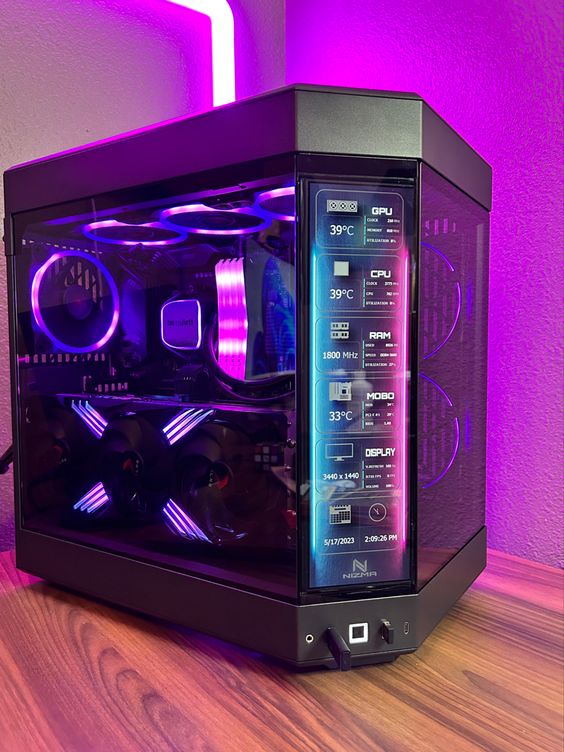


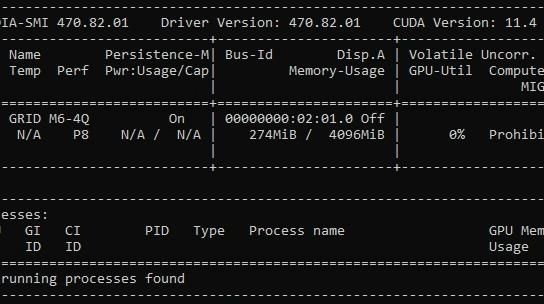
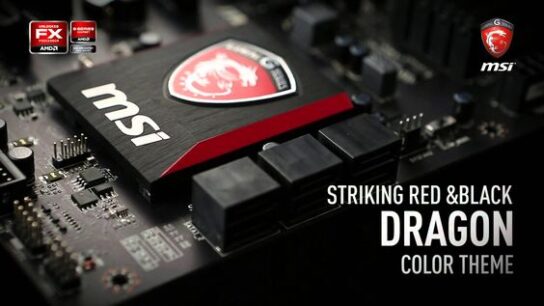
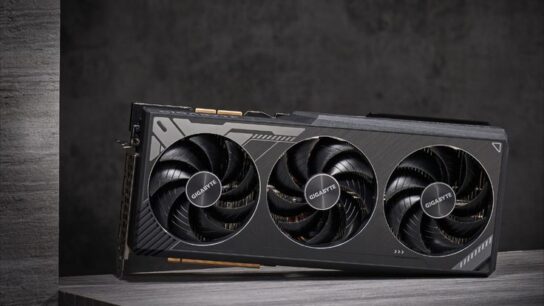

[…] High-End Speeds: High-performance GPUs, especially those designed for gaming and professional use, may feature memory clocks in the range of 8000 MHz to 10000 MHz or more. […]